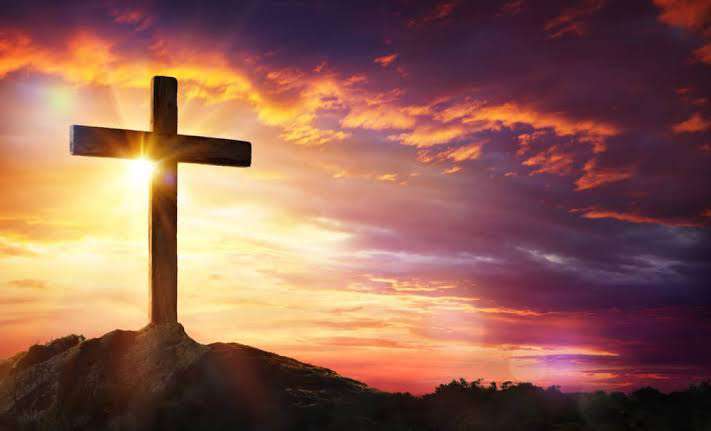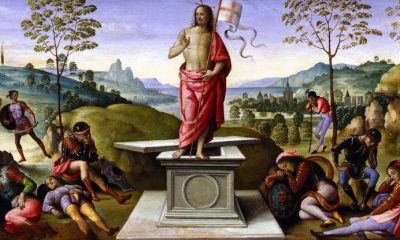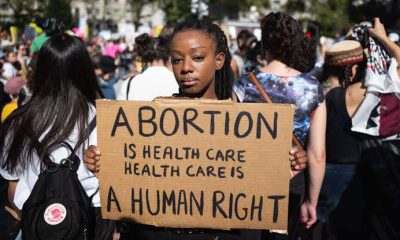Opinion
Understanding the true meaning of Holy Week

Prelude
Holy Week begins on Palm Sunday and ends on Vigil of Holy Saturday. One may ask why there are a lot of importance attached to this week. Indeed there are many opportunities for Christians to meditate on what Christ did.
Speaking about the Palm Sunday- the beginning of the Most Holy Week, the Ceremonial of Bishops succinctly has it that, “ On Passion Sunday {Palm Sunday} the Church enters upon the mystery of its crucified , buried , and risen Lord, who , by his entrance into Jerusalem, gave a glimpse of his own majesty.”{Ceremonial of Bishops #263}
It is good to bear in mind that everyday of the Holy Week is worth reflecting upon. For instance after the Palm Sunday ids the Holy Monday. Is often called the Fig Monday. This day of Holy Week features Jesus cursing a fig tree for not bearing fruit, causing it to whither. Jesus also drives the moneychangers out of the Temple and addresses challenges to His authority. On this day is very important to reflect the judgment for our rejection of Christ and abuse of graces. Then we have the Holy Tuesday. This is the day Jesus shared the parable of the wise and foolish virgins and the parable of the talents. On this day Jesus speaks about the eight “woes” against the Pharisees and some Scripture scholars refers to the Olivet Discourse. Or attention is also drawn to the parable of the wise and foolish virgins thus on this day Christians re reminded on the importance of vigilance, making sure we are all prepared for the coming of the Bridegroom. Wednesday of Holy Week is often called Spy Wednesday. Why? Because this is the day Judas Iscariot spies on Jesus, secretly plotting to have him arrested. But in this short reflection our attention is more on the first day of the Most Holy week and on the activities of the Holy Triduum.
It will be adequate to say that, “Every Christian sect, denomination, and church has developed its own practices and observances. However, many Christians are only familiar with Palm Sunday and Resurrection Sunday, and maybe Good Friday. Yet Holy Week has so much more to offer!”
Palm Sunday
Palm Sunday is the Sunday before Easter Sunday. It is also known as Passion Sunday. It marks the beginning of Holy week. This day is associated with the use of leaves of palms from the palm family or branches {oil palm, date palm, olive branches, etc}.
It is referred to as Jesus’ Triumphant entry into Jerusalem. Jesus entered Jerusalem riding the donkey and people welcomed him singing hosanna to the son of David; they waved the palm fronds and laid their cloaks on His way.
This Triumphant entry into Jerusalem is also a fulfilment of the words of Prophet Zachariah that the Messiah will return and bring glad tidings to the people of Jerusalem. Jesus’ return to the city also fulfilled Prophet Zachariah’s prophecy that the Messiah will return and bring glad tidings for Jerusalem’s people.
Palms are considered as signs peace and Victory. Donkey portrays gentility. These are imbedded in Christ. The gentle and peaceful king who brings victories for his people.
Today there should be necessarily a procession or a solemn entrance before the principal Mass. The Liturgical Colour of today is red. In the Mass proper the Passion of our Lord Jesus Christ is read.
THE EASTER TRIDUUM
It is also known as: – Paschal Triduum or simply The Triduum. Triduum is derived from the Latin word meaning ‘three days.’ It comprises of Holy Thursday, Good Friday, Holy Saturday and Easter Sunday. Triduum begins on the evening of Holy {Maundy} Thursday and ends at Evening Prayer on Easter Sunday. Triduum celebrates the heart of our Catholic faith and salvation {the passion, death and resurrection of our Lord Jesus Christ}. It is regarded as the high point of the Church’s Liturgical Year.
Maundy Thursday
It is also known as Holy Thursday. The activities are in two sessions-: Morning {Chrism Mass}; Evening {Mass of the Lord’s Supper}.
Maundy is from Latin word mandatum, meaning “commandment,” Maundy refers to the commands Jesus gave his disciples at the Last Supper: to love with humility by serving one another and to remember his sacrifice.
In the evening, we commemorate Our Lord’s institution of the Holy Eucharist at the Last Supper. At the evening Mass of the Lord’s Supper on Holy Thursday Gloria is sang. During the Gloria, the church bells are rung and then remain silent until the Easter Vigil.
At the end of the Holy Thursday Mass the Altars are stripped, the decorations are taken away, the Altar is left absolutely bare and it will be bare in that way for the whole of Good Friday, right up to the beginning of the vigil before Easter.
No Mass will be celebrated again in the Church until the Easter Vigil which proclaims the Resurrection of Christ.
At the end of the Mass the Blessed Sacrament is transferred to the Altar of repose for Adoration. Through this Adoration of the Blessed Sacrament by the people during the night, the church remains with the Lord during His agony at Gethsemane on the Mount of Olives.
The Last Supper of Jesus with his disciples contains many significant principles:-
– Jesus predicts his immediate suffering and it will be His final meal prior to his entering into his Passion.
– Jesus gives His followers his eternal presence namely his personal presence as he gives them his body and blood sacrificed on behalf of all mankind.
– Jesus provides a very important principle for living a Christian life: the principle of service. He washes their feet and shows the means of service.
– Jesus provides hope to his followers: “and I confer on you a kingdom, just as my Father conferred one on me, so that you may eat and drink at my table in my kingdom and sit on thrones, judging the twelve tribes of Israel.”
Mass of the Chrism
On Holy Thursday morning there is also a special Mass in Cathedral Churches. The bishop concelebrates with his presbyterium.
It is a solemn observance of Christ’s institution of the priesthood at the Last Supper. At this “Chrism Mass” the bishop also blesses the Oils of Chrism, Catechumen, and the Oil of the Sick. The Chrism is used for Baptism, Confirmation, Ordinations {priestly and episcopal ordination} and dedication of Churches; the Oil of Catechumen for those preparing for baptism; the Oil of the Sick for the Anointing of the sick or the dying.
It is the feast day for priests and is dedicated to Priests as we remember the institution of the Priesthood by Jesus and imparts to them his mission to proclaim the kingdom. A Priest is a mediator between God and Man, the one who offers a true sacrifice in acknowledgment of God’s supreme dominion over human beings in expiation for their sins.
Through his mediation, a priest communicates from God to the people and from the people to God. In this Mass all priests and bishops trace their ordination to the Apostles as they celebrate the Eucharist. And there is renewal of commitment to priestly service.
It is good to know that for Pastoral reasons the Local Ordinary may celebrate the Mass of the Chrism any other day of the Holy week.
Good Friday
Good Friday, the Friday before Easter, commemorates the Passion and Death of our Lord Jesus Christ on the Cross.
No Mass is celebrated on Good Friday. The Church celebrates a special liturgy in which the account of the Passion according to the Gospel of John is read.
A series of intercessory prayers are offered, and the faithful venerate the Cross by coming forward and kissing it. The Good Friday liturgy concludes with the distribution of Holy Communion. It is Communion that were reserved from the Mass of the Lord’s Supper on Holy Thursday that are distributed.
Good Friday is a day of strict fasting and abstinence. Catholics who are over the age of 18 and under the age of 60 are required to fast, which means that they can eat only one complete meal and two smaller ones during the day, with no food in between. Catholics who are over the age of 14 are required to refrain from eating any meat, or any food made with meat, on Good Friday.
Holy Saturday
Holy Saturday, Sabbatum Sanctum in Latin, is the last day of Holy Week, and the 40th day of the traditional Lenten fast, although Lent ends liturgically on the evening of Holy Thursday.
The evening of Holy Saturday begins the third and final day of the Paschal Triduum. Holy Saturday is essentially a sparse time of reflection upon Christ’s death and burial in anticipation of the Great Vigil of Easter {Paschal Vigil} The vigil usually begins the night of Holy Saturday.
The Liturgy starts outside the Church with the Service of Light {blessing of Fire and the Lighting of the Paschal Candle} after which the solemn procession into the Church.
Five important moments during the Mass:-
i. The Easter Proclamation {the singing of the Exsultet}.
ii. The readings are more than three.
iii. The Gloria with the ringing of Church bells
iv. The singing of great Alleluia
v. The renewal of Baptismal Promises and Baptism if there are candidates for that
Easter Sunday
It is also known and called Pascha, Resurrection Sunday. This day commemorates the resurrection of our Lord and Saviour Jesus Christ from the dead.
It is also good to know that the evening of today brings to a close the Holy Triduum which began on the evening of Holy Thursday. Today, we celebrate the crescendo of our Christian Faith, “And if Christ has not been raised, then all our preaching is useless, and your faith is useless”. {1Corinthian 15:14}
Today marks the beginning of the Easter Octave which will end next Sunday, the second Sunday of Easter {the Divine Mercy Sunday. We start this day the 50 days journey of Easter Season which will culminate on Pentecost Sunday. Easter has a link to the Jewish Passover and the Exodus from Egypt. This fact is evidenced in the Last Super, the Sufferings and Crucifixion of our Lord that brought about the Resurrection.
The three Synoptic Gospels made it clear that Jesus is the True Passover Lamb. Jesus made this known at the Last Super All through the Easter Season the Paschal Candle which was blessed during the “Mother of all Vigils”- {Vigil} is kept lighted during Masses and is taken to the Baptisary after the Solemnity of the Pentecost
Conclusion
Let us live the Most Holy Week in reflection and spiritual renewal and above all “express conversion in relation to oneself, to God, and to others” {Catechism of the Catholic Church # 1434}. May I remind us the fact that the harvest of simple path is sown in renewed daily living and The Simple Path and Its Fruits Are:-
The fruit of silence is PRAYER.
The fruit of prayer is FAITH.
The fruit of faith is LOVE.
The fruit of love is SERVICE.
The fruit of service is PEACE.
Let us live Daily and Deeply the Simple Path and Harvest as Well the Fruits during this Most Holy week and beyond.
Have a Blessed Holy Week
Fr Iwuji is of the Society of Divine Vocations.
He can be reached on:
08156198851






